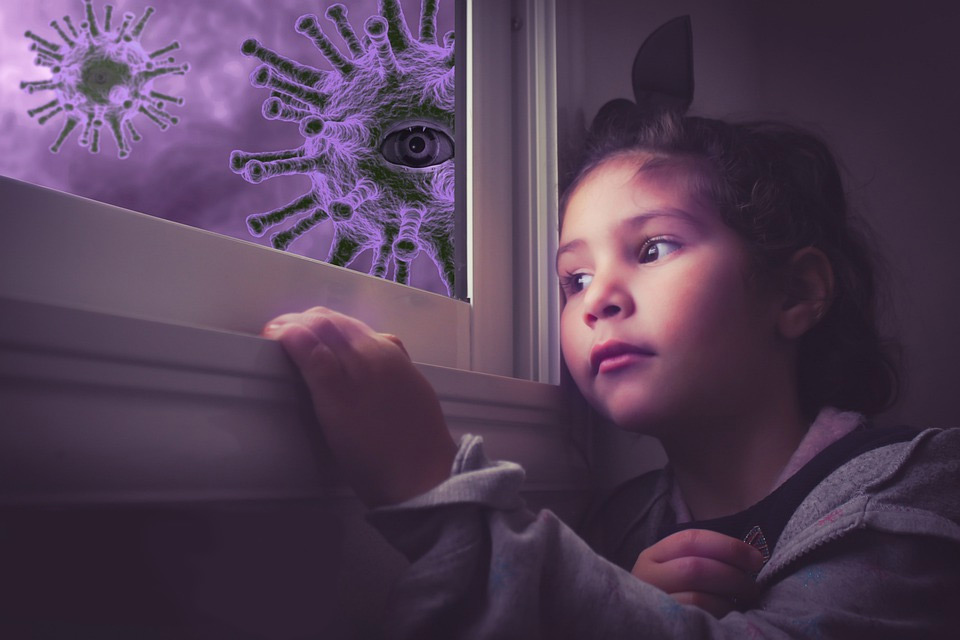
“경험에 근거한 최근 연구는 어린이와 청소년을 신체적으로 덜 활동적으로 유지하고 그들의 일상적인 활동을 방해하는 것이 어린이와 청소년의 정신 건강과 신체 건강에 부정적인 영향을 미친다는 것을 보여준다. [장기 휴교]의 결과는 세계 인구의 42%가 장기적인 정신 건강에 미치는 부정적 영향에 노출되어 있다는 것이다.”
“경험에 근거한 최근 연구는 어린이와 청소년을 신체적으로 덜 활동적으로 유지하고 그들의 일상적인 활동을 방해하는 것이 어린이와 청소년의 정신 건강과 신체 건강에 부정적인 영향을 미친다는 것을 보여준다. [장기 휴교]의 결과는 세계 인구의 42%가 장기적인 정신 건강에 미치는 부정적 영향에 노출되어 있다는 것이다.”
제이미 D. Aten 박사, 2020년 6월,
“학교폐쇄 장기화가 어린이에게 미치는 영향: COVID-19 대책은 어린이와 청소년 정신건강에 영향을 미친다”라는 논문, <심리학 오늘>
학교는 아이들의 닻이자 인생에서 성공하기 위해 필요한 지식과 기술을 배우는 곳이다. 뿐만 아니라, 그들은 학급 친구들과 또래 집단으로부터 엄청난 사회 정서 발달 지원을 받는다. 학교는 또한 건강, 스포츠, 예술 활동의 원천이기도 하다. 초봄에 학교를 폐쇄한 COVID 19는 아이들에게 교육의 중요한 요소들을 모두 빼앗았다. 정신적으로 변화를 준비할 겨를도 없이 학생들을 집으로 보내 고립시키고 대면 학습을 온라인 학습으로 대체했다. 이런 일상의 급격한 변화나 구조는 젊은이의 정신 건강에 매우 충격적이고 해로울 수 있다. 안타깝게도, COVID-19의 지역사회 전파를 줄이기 위해 극단적인 조치를 취해야 했기 때문에 다른 방도가 없었다.
폐쇄 기간 동안, 지방 보건 공무원인 보니 헨리 박사와 그녀의 팀은 바이러스와 일상이 정상으로 돌아오기 위해 갖춰져야 할 모범 사례들을 신중하게 연구하는데 시간을 보냈다. 또한 폐쇄로 인해 BC가족들이 직면하고 있는 어려움도 면밀히 감시하고 논의하였다. 보고서는 “BC가족이 학습장애, 자녀 스트레스 증가, 연계성 저하 등을 보고하고 있다”고 지적했다. 지지적인 일상과 구조가 사라지면서 건강한 행동은 급격히 줄어들었다.”
BC의 K-12 교육 재시동 프레임워크를 종합할 때, 바이러스의 잠재적 위험은 가정에서 지속적으로 격리되는 학생들의 정신 건강의 위험에 영향을 미쳤다. 심사숙고 끝에, 재오픈 결정에서 학생들이 이처럼 중요한 사회적이고 개인적인 혜택을 제공하는 전인교육을 받을 수 있도록 지원하는 것이 우선시 되어야 한다는 생각이 뒷받침 되었다.
이와 같은 중대한 결정은 가볍게 여기지 않는다. 학부모들은 모범 사례를 연구하고 학교 학생과 교사의 건강을 최우선으로 하는 학교 계획으로의 복귀를 준비하는 데 수백 시간이 걸렸다는 사실에 안심할 수 있다. 보건부 연구는 B.C.의 지역사회 발병률이 계속해서 낮으며 학교 내에서의 위험은 미미하다고 생각한다는 것을 보여주었다. 그러나 그들은 학교에서 주기적으로 발생하는 사례나 군집들의 위험이 있을 것으로 예상한다. 따라서, 학교로의 회귀 계획에는 특히 학교에서 사례가 있을 경우 즉각 조치를 취하기 위해 매우 엄격한 제한과 규칙이 포함되어 있다.
K-12 공중보건지침에는 시험이나 조사를 통해 직원이나 학생이 COVID-19 확진환자일 경우 즉시 취할 조치가 정리되어 있다.
1. 공중 보건은 그 사람이 최근에 밀접하게 접촉한 사람(즉, 접촉 추적)을 확인하여 감염 경위와 감염의 위험이 있는 다른 사람을 결정한다.
2. 학교에서 잠재적 노출이 있는 경우(즉, COVID-19의 확진환자가 있고 감염 가능성이 있을 때 학교에 다녔던 학생 또는 직원) 공공 보건은 학교와 협력하여 노출되었을 수 있는 사람을 이해하고, 다른 학생 또는 다른 학생인지 식별하는 것을 포함하여 어떤 조치를 취해야 하는지를 결정할 것이다. 직원이 아프거나(사례 발견) 노출되었으므로 증상을 모니터링하거나 자가 격리해야 한다.
3. 공중 보건은 후속 조치가 권고되는 경우(예: 자가 절연, 증상 감시 등)를 포함하여 노출되었을 수 있다고 판단하는 모든 사람에게 통지한다.
4. 그들은 학교 관리자와 협력하여 추가 통지가 보장되는지 여부를 판단한다(예: 더 넓은 학교 커뮤니티에 대한 통지).
5. 개인 프라이버시 권리가 유지되고 제공된 정보가 완전하고 올바르도록 하기 위해, 학교 행정관이나 교직원은 학교 관리자가 학교 의료 책임자의 지시를 받지 않는 한, 잠재적인 COVID19 사례 또는 확인된 COVID19 사례에 대해 직원이나 학생의 가족에게 통보해서는 안 된다.
학부모들은 정부가 COVID-19의 케이스와 클러스터가 학교 환경에서 발생할수 있다는 것을 감안하고 있다는 것을 알아야 한다. 그러나 정부는 위험을 세심하게 평가하고 효과적인 완화 계획을 수립했다고 확신한다. 전반적으로, 학교 환경과 그들의 또래들로부터 멀리 떨어진 가정에서 고립된 청소년의 정신적, 육체적 건강에 대한 심각한 위험은 학교를 다시 개교함으로써 건강에 훨씬 더 큰 위협으로 평가되었기 때문이다.
Balancing Mental & Physical Health Risks with Reopening Schools
“Empirical studies suggest that keeping children and adolescents less physically active and disrupting their routine activities have negative impacts on child and adolescent mental health and physical health. The outcome [of prolonged school closures] is that 42% of the world’s population is exposed to long-term negative effects on their mental health.”
Jamie D. Aten Ph.D., from article “The Impact of Prolonged School Closures on Children: COVID-19 measures affect child and adolescent mental health”, June 2020, Psychology Today
School is the anchor for children and the place where they learn the knowledge and skills they need for success in life. Not only that, they also receive tremendous social and emotional development support from their classmates and peer groups. Schools are also their source of extracurricular wellness, sports and artistic activities as well. The COVID 19 shutdown of schools in early spring stripped children of all of these important elements of their education. Without any time to mentally prepare for the change, students were sent home to isolate and face to face learning was replaced with online learning. Such a dramatic change to daily routines and structure can be very shocking and damaging to the mental health of a young person. Unfortunately, there was no other option as the province had to take extreme measures to reduce community transmission of COVID-19.
During the closure, the Provincial Health Officer, Dr. Bonnie Henry, and her team took the time to carefully research the virus and the best practices that would need to be put in place for daily life to return to normal. In addition, the difficulties that BC families were facing from the closure were also closely monitored and discussed. It was noted in the provincial report on the matter that “B.C. families are reporting impaired learning, increased child stress, and decreased connection. With the loss of supportive routines and structures, healthy behaviours have declined dramatically.”
Therefore, in putting together BC’s K-12 Education Restart Framework, the potential risks of the virus were balanced with the substantial risks to the mental health of students of continuing to isolate at home. After much careful consideration, it was felt that supporting students to receive full-time, in-person learning which offers such important societal and individual benefits had to be prioritized in the re-opening decision.
A major decision like this is not taken lightly. Parents can feel reassured that hundreds of hours were spent researching best practices and preparing a return to school plan that prioritized the health of students and teachers in the school. The Health Ministry research showed that the community prevalence in B.C. continues to be low and the risk within schools is considered to be minimal. However, they do anticipate that there will be some risk of cases or clusters happening periodically in schools. Therefore, the back to school plan includes very rigorous restrictions and rules, especially for the immediate action to be taken if there is a case in a school.
The province’s Public Health Guidance for K-12 outlines the actions that will be immediately taken if a staff or student is a confirmed case of COVID-19 through testing or investigation:
1. Public health will identify who that person has been in close contact with recently (i.e. contact tracing) to determine how they were infected and who else may have be at risk of infection.
2. If there was a potential exposure at a school (i.e. a student or staff who has a confirmed case of COVID-19 AND attended school when they may have been potentially infectious), public health will work with the school to understand who may have been exposed, and to determine what actions should be taken, including identifying if other students or staff are sick (case finding) or have been exposed and should monitor for symptoms or self- isolate.
3. Public health will notify everyone who they determine may have been exposed, including if any follow-up actions are recommended (e.g. self-isolate, monitor for symptoms, etc.).
4. They will work with the school administrator to determine if additional notifications are warranted (e.g. notification to the broader school community).
5. To ensure personal privacy rights are maintained, and that the information provided is complete and correct, school administrators or staff should not provide notifications to staff or students’ families about potential or confirmed COVID19 cases unless the school administrator is directed to do so by the school medical officer.
Parents should know that the government fully expects that cases and clusters of COVID-19 will occur in school settings. However, they are confident that they have carefully assessed the risks and put together effective mitigation plans. Overall, the serious risks to the mental and physical health of youth isolating at home away from the school environment and their peers was judged as being the far greater threat to health that had to be combated by re-opening the schools again.
관련칼럼
주정부, 대학 재정난 속 ‘고등교육 지속 가능성 검토’ 착수
BC주 전역의 대학·컬리지에서 직원 감축·학과 축소가 이어지는 가운데, 주정부가 고등교육 기관들의 재정 지속 가능성을 재점검하는 전면 검토에 착수했다. 정부는 현재의 재정 압박이 연방정부의...
이정순 동화작가 추천도서 23《하늘을 타고 올라가는 꽃》
어려움 속에서도 희망을 잃지 않는 사랑과 우정 그리고 따뜻한 가족 이야기 『하늘을 타고 올라가는 꽃』은 40여 년을 교단에서 어린이들과 생활하며 어린이들을 사랑과 기쁨, 고민과 슬픔을 함께...
국제유학생 쿼터 65% 축소…B.C. 대학재정 ‘직격탄’
연방정부가 2026년 국제유학생 유학허가 발급 규모를 437,000건에서 155,000건으로 대폭 축소하기로 하면서, B.C. 주 대학 및 컬리지들이 재정 악화와 학사 운영 차질에 직면하고...


